In our digital age, we’re surrounded by devices that emit electromagnetic fields (EMF) — from smartphones and laptops to Wi-Fi routers and microwaves.
Although research on the health impacts of EMF radiation is still ongoing, many people seek ways to minimize their exposure, especially within their homes. One simple and natural method is by incorporating indoor plants known to absorb EMF radiation. Beyond their EMF-absorbing qualities, these plants also improve air quality, add aesthetic value, and create a calming atmosphere. Let’s explore some of the top indoor plants that can help you create a healthier living environment.

1. Cactus (Cactaceae Family)
Cacti are not only low-maintenance and stylish but are also believed to absorb EMF radiation. Their thick, fleshy stems are well-suited to desert environments where they can withstand harsh conditions, and this resilience extends to their ability to absorb certain types of radiation. Placing a cactus near electronic devices, especially your computer or Wi-Fi router, could help mitigate EMF exposure.
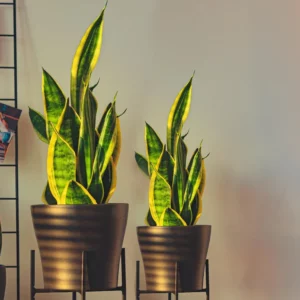
2. Snake Plant (Sansevieria trifasciata)
Also known as “Mother-in-Law’s Tongue,” the Snake Plant is a popular choice for its air-purifying abilities. It absorbs toxins like formaldehyde and benzene from the air and is also reputed to absorb EMF radiation. This hardy plant can thrive in low light and requires minimal watering, making it an ideal choice for both home and office environments.

3. Sunflowers (Helianthus annuus)
Sunflowers are among the most effective plants for absorbing radiation, making them a powerful tool for environmental cleanup. Following the Chernobyl disaster, millions of sunflowers were intentionally planted to help mitigate radiation by absorbing radioactive isotopes from the soil. Their unique ability to draw in heavy metals and radioactive contaminants highlights their role in phytoremediation, a natural process for restoring contaminated environments.
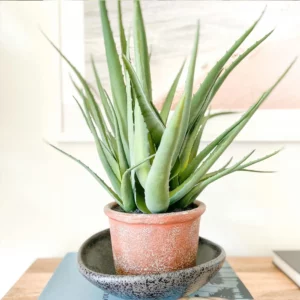
4. Aloe vera (Helianthus annuus)
Aloe vera has been valued for centuries for its medicinal properties, particularly in healing wounds and soothing burns. In addition to its therapeutic benefits, Aloe vera has the ability to absorb high levels of radiation, making it a natural ally in reducing electromagnetic exposure. Placing Aloe vera near sources of electromagnetic wave radiation, such as electronic devices, can help mitigate the impact of these emissions in your living space.
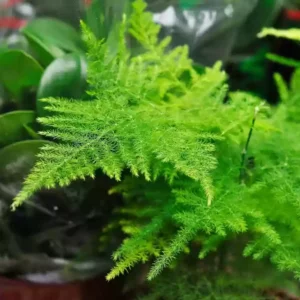
5. Asparagus Fern (Asparagus setaceus)
The Asparagus fern offers protection against non-ionizing radiation through its dense root system and smooth, moisture-rich leaves. This plant stores water in its roots, where the water molecules form hydrogen bonds that can absorb electromagnetic radiation. When these bonds break, the energy dissipates as heat, reducing the potential impact of radiation in the surrounding environment.

6. Ivy plants (Hedera)
Ivy plants are adept at pumping water through their stems and storing it in their waxy leaves, which helps them maintain hydration and resilience. This natural water storage system not only keeps the ivy healthy but also aids in protecting the plant from electromagnetic radiation. The moisture within the leaves can absorb and dissipate radiation, reducing its potential impact on the plant and the surrounding environment.

7. Succulent (Aizoaceae, Cactaceae, and Crassulaceae, )
Succulent plants are known for their strong air-purifying abilities and are also believed to be effective at absorbing EMF radiation. Their small size makes them perfect for placement next to computers or other radiation sources, serving as both a functional and decorative element. Easy to care for, succulents thrive with minimal light and water, making them a low-maintenance option for enhancing your workspace.
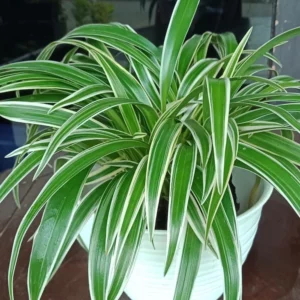
8. Paris lilies (Melanthiaceae)
Paris lilies are among the best houseplants for reducing indoor air pollution, filtering out harmful toxins from the air. In addition to their air-purifying properties, Paris lilies are also believed to ward off electromagnetic radiation, offering an added layer of protection within your home. Their ability to do so becomes even more pronounced when they bloom, adding both beauty and functionality to your living space.
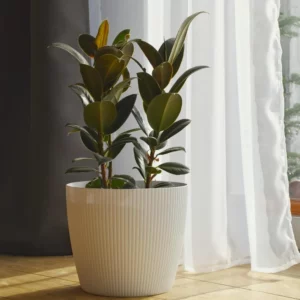
9. Karet Kebo/ Rubber Plant (Ficus elastica)
Rubber Plants are effective at absorbing airborne chemicals and EMF radiation. Their large, glossy leaves not only add a touch of elegance to any space but also contribute to better air quality. Rubber Plants prefer bright, indirect light and regular watering, and they can grow quite large if given enough space.
Tips for Maximizing the Benefits of EMF-Absorbing Plants
To fully benefit from these EMF-absorbing plants, consider the following tips:
- Place Plants Strategically: Position plants near electronic devices like computers, Wi-Fi routers, and televisions, where EMF radiation is most concentrated.
- Create a Green Space: Combine multiple plants in one area to create a mini indoor garden. This not only enhances the aesthetic appeal but also increases the collective EMF-absorbing power.
- Maintain Your Plants: Regular watering, pruning, and proper lighting ensure that your plants remain healthy and effective at absorbing EMF radiation.
- Incorporate Different Species: Use a variety of plants to maximize the benefits. Different plants absorb different types of radiation and air pollutants, so a diverse collection will provide the best protection.
Conclusion
While the exact science behind plants’ ability to absorb EMF radiation is still being explored, many people find comfort in adding these natural filters to their indoor environments. The added benefits of improved air quality, increased humidity, and the overall calming effect of greenery make indoor plants a valuable addition to any home or office. By strategically placing these EMF-absorbing plants, you can create a healthier and more balanced space, one that harmonizes technology with nature.
Whether you’re a seasoned plant enthusiast or just beginning your indoor gardening journey, these plants offer a simple, effective, and aesthetically pleasing way to reduce EMF exposure and enhance your living environment.
Refrences:
- The Effect of Ornamental Plants on Reducing the Intensity of Electromagnetic Wave Radiation | UNESS Journal | Mugi Lestari , Sulhadi, Sutikno
Postgraduate Universitas Negeri Semarang, Semarang, Indonesia



